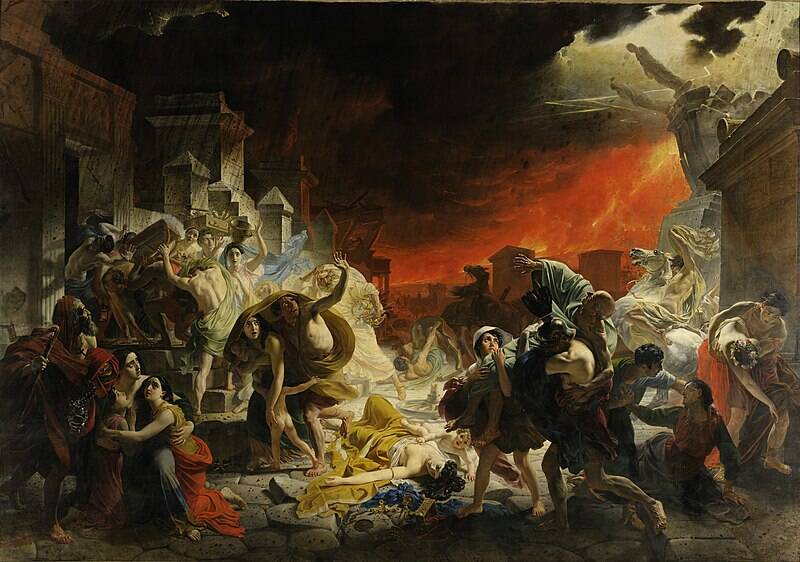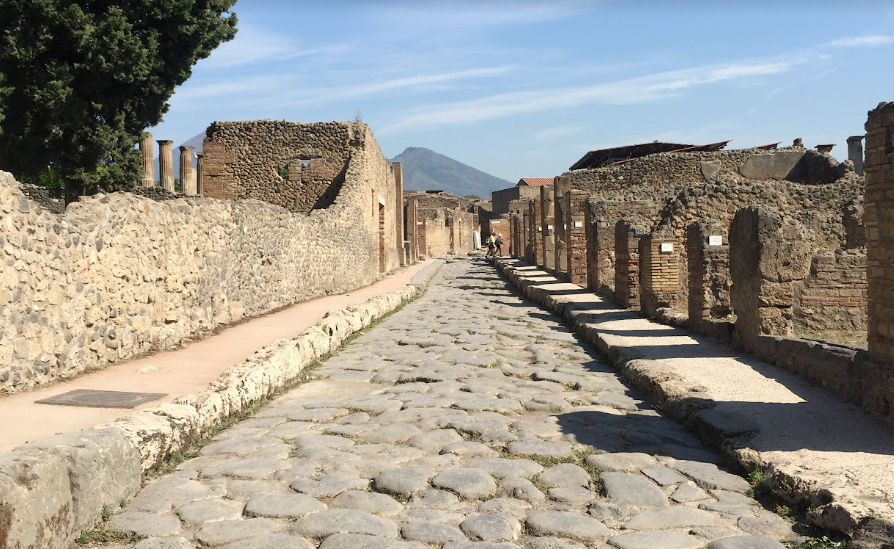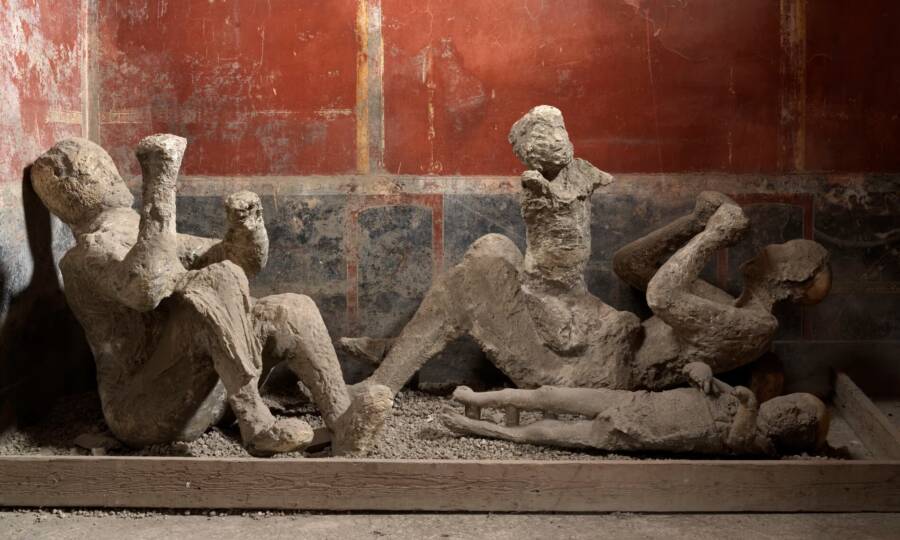Researchers have uncovered new information that upends previous assumptions about the genders and familial relationships of some of the victims of Mount Vesuvius who perished in Pompeii in 79 C.E.

Public DomainKarl Brullov’s 1830 painting The Last Day of Pompeii, depicting the 79 C.E. eruption that took 2,000 lives in Pompeii.
When Mount Vesuvius erupted in 79 C.E., it blanketed the Roman city of Pompeii in ash, freezing the area and its residents in time. And in the last few centuries, archaeologists have continuously worked to dig out Pompeii’s remains and reveal the tragic story of this disaster.
Now, a new DNA study has challenged long-held beliefs about the relationships among some of the victims in Pompeii. Focusing on two locations in the city — the House of the Golden Bracelet and the House of the Cryptoporticus — researchers conducted DNA testing on bodies previously assumed to be family members.
In the House of the Golden Bracelet, where a nuclear family of four was believed to have perished, scientists found that the adults were actually both male and were unrelated to the children. Similarly, in the House of the Cryptoporticus, the “Two Maidens” were revealed to be genetically unrelated and not both female, shattering prior assumptions about who these victims were.
The Eruption Of Mount Vesuvius Destroys The Ancient Roman City Of Pompeii

Amber MorganThe ruins of Pompeii with Mount Vesuvius in the background.
On August 24, 79 C.E., Mount Vesuvius began spewing ash over the towns below, including the Roman resort town of Pompeii. With little warning of the natural disaster, the town’s 10,000 to 20,000 residents were left at the mercy of the volcano.
One eyewitness, Pliny the Younger, described the horrific ordeal in his letters:
“Ashes were already falling, not as yet very thickly. I looked round: a dense black cloud was coming up behind us, spreading over the earth like a flood…You could hear the shrieks of women, the wailing of infants, and the shouting of men; some were calling their parents, others their children or their wives, trying to recognize them by their voices.
People bewailed their own fate or that of their relatives, and there were some who prayed for death in their terror of dying. Many besought the aid of the gods, but still more imagined there were no gods left, and that the universe was plunged into eternal darkness for evermore.”
While some escaped the debris, pyroclastic flows, and ash-filled air, 2,000 of the town’s residents were not so lucky. Their bodies, encased in volcanic ash, were not rediscovered until excavations began in 1748. Over 1,000 sets of remains from Pompeii victims have been found since then, many of which were still locked in their final expressions of agony.
Just this year, archaeologists uncovered the remains of an entire family huddled together in a room, as well as a couple in a bedroom.

Amber MorganA cast of a Pompeii victim frozen in a crouched position.
As more human remains are discovered, researchers work hard to preserve them and make casts of the victims. Giuseppe Fiorelli, a 19th-century Italian archaeologist, perfected the cast method in 1863. To date, a little over a hundred casts have been made.
Recently, researchers conducting DNA analysis on Pompeii victims discovered surprising information that reshapes how we understand social relations in ancient Rome.
A New DNA Study Of Pompeii Victims Uncovers Surprising Results

Archeological Park of PompeiiBody casts of two adults and two children who died in the “House of the Golden Bracelet” in Pompeii.
On November 7, a study was published in Current Biology that analyzes the DNA of a handful of Pompeii victims.
The research team wanted to expand on Giuseppe Fiorelli’s cast work, adding more detail about the victims and their possible relationships with those who died alongside them.
The team took DNA from victims inside the House of the Golden Bracelet, named after one of the victim’s jewelry. The home was believed to be the final resting place of a family of four – a mother, father, and their two children.
However, when the team tested their DNA, they discovered that the group was more than likely not a nuclear family at all. Instead, the two adults were discovered to be male and the two children were not related to either of them. The male wearing the bracelet was also found to have black hair and dark skin.
“We were able to quite clearly disprove what archaeologists have put forth about this grouping being a nuclear family,” said Dr. Alissa Mittnik, a geneticist at the Harvard lab who worked on the project, told The New York Times. “But of course we don’t really know, and we can’t really say, who these individuals were and how they interacted with each other. It could have been that these were servants or slaves, or the children might have been the children of servants or slaves who also inhabited the house.”
Additionally, the team tested the DNA of the two victims referred to as the “Two Maidens” found inside the House of the Cryptoporticus. For years, many believed that these victims were sisters or perhaps a mother-daughter duo. However, DNA analysis shows that one of the figures was male and that they were not related to each other.
“There again, we could say that one of them was genetically male and they were not maternally related to each other. So again, a case where the most obvious or most intuitive interpretation was not, in fact, what we see scientifically,” Dr. Mittnik explained.

Archeological Park of PompeiiThe “Two Maidens” discovered in the House of the Cryptoporticus in Pompeii.
With these new discoveries, the world has been given an opportunity to rethink what we know about Pompeii and the social makeup of ancient Rome in the centuries before the empire fell. As Phil Perkins, a professor of archaeology at the Open University, told The Guardian:
“The research shows that scientific analysis can provide new insight into the lives of the victims of Pompeii, and provides further evidence of human mobility around the Mediterranean in the Roman period. The people of Pompeii were not Romans from the city of Rome, but people of the Mediterranean.”
After reading about the new DNA analysis of Pompeii victims, learn about the worst emperors of ancient Rome. Then, discover the stories of the most famous Roman gladiators.





